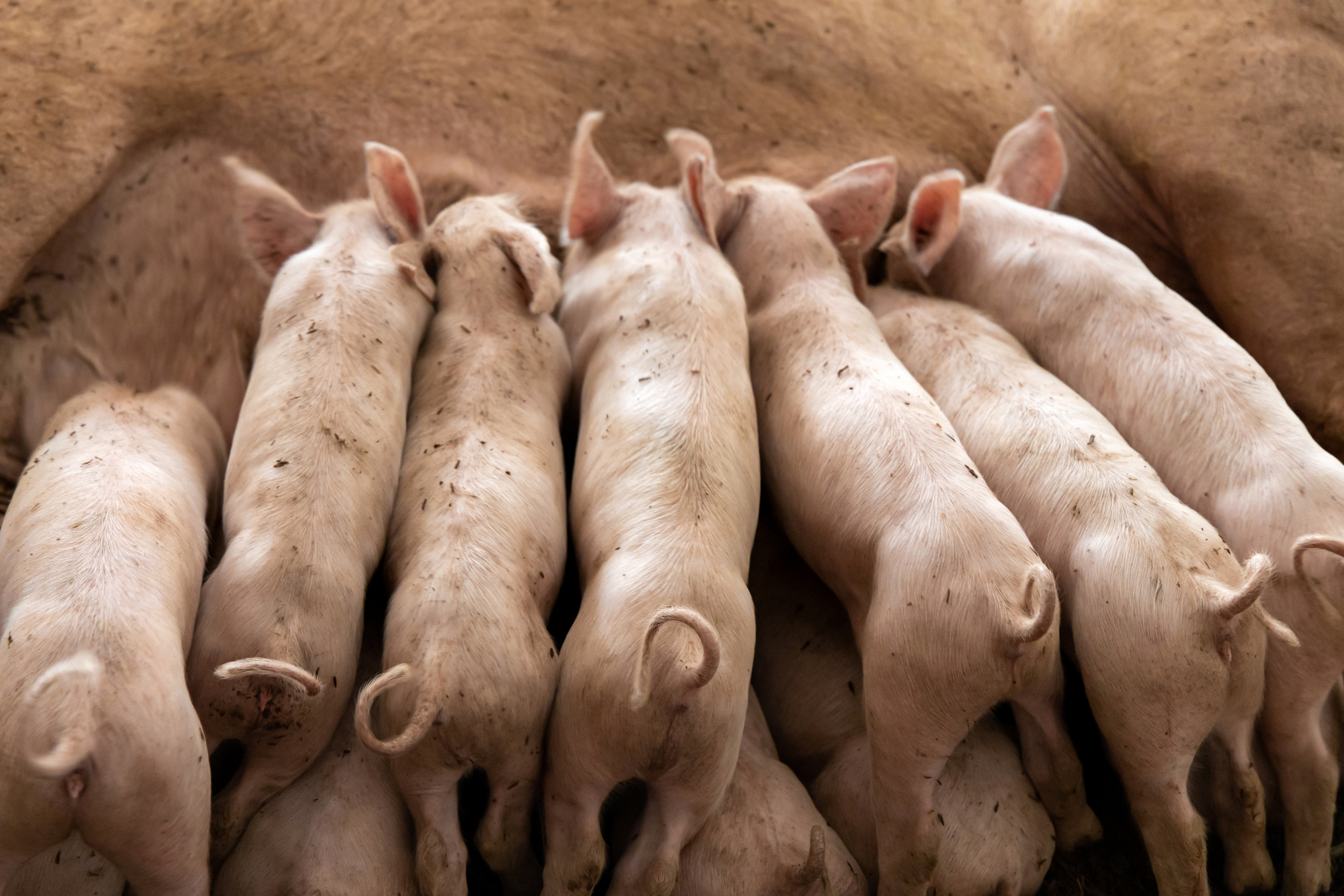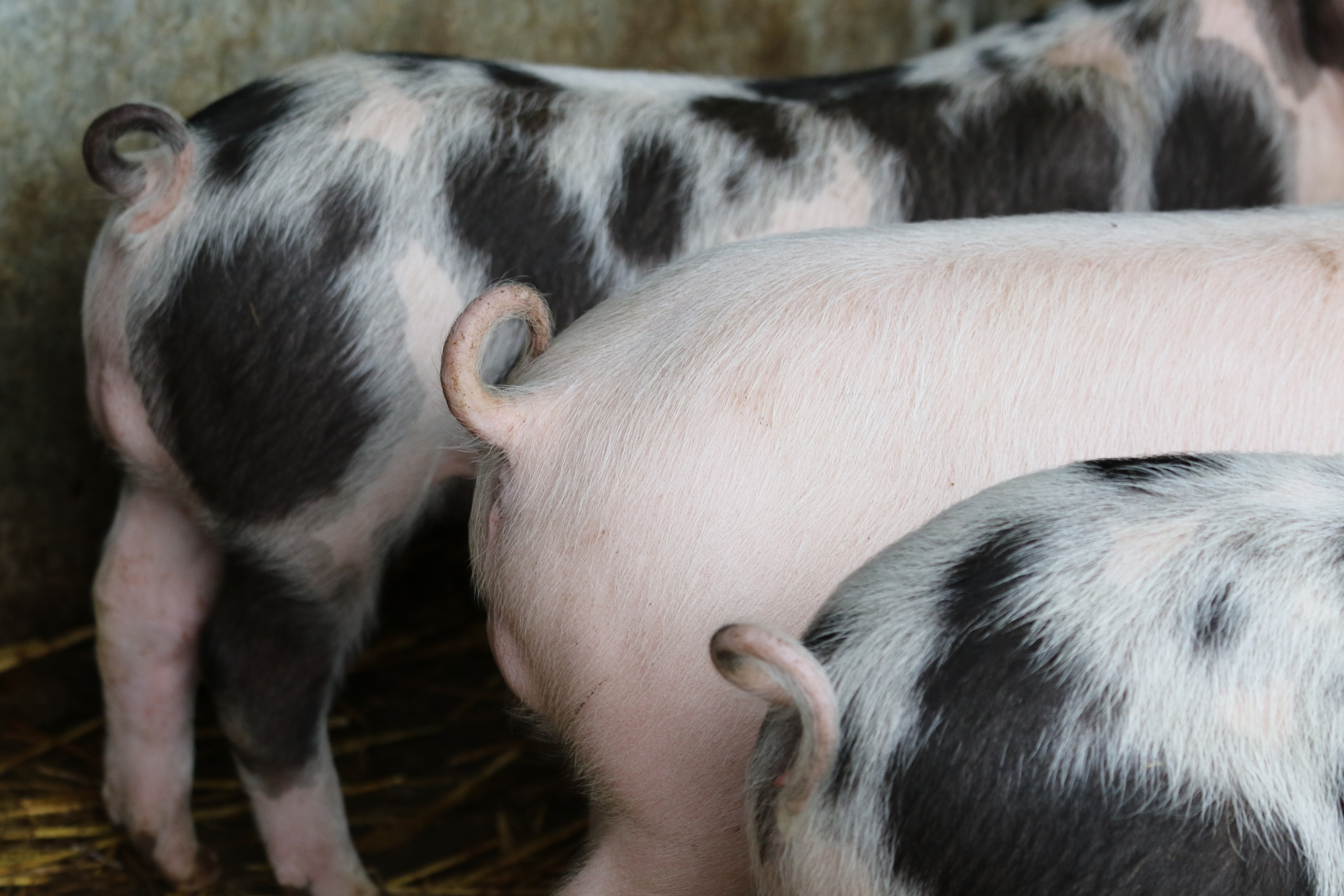



Additional training and barn investments could help phase out tail docking
It is still too early to stop docking piglets' tails on all pig farms in the Netherlands, according to a new study carried out by Wageningen University & Research, Utrecht University and commissioned by the Producers Organisation for Pig farming (POV) and the Dutch Ministry of Agriculture.The reason for this outcome is that keeping pigs with intact tails is complex. A pig farmer who stops docking pigs tails should also be able to earn extra money. Training will help pig farmers and yard managers to recognize and reduce the risk of tail-biting.

Pigs that are uncomfortable may bite each other’s tails out of frustration or boredom. This can lead to poor welfare of the bitten pig, less growth and infections or even complete rejection of the pig at the slaughterhouse. To prevent tail-biting, many piglets have their tails docked shortly after birth. This is criticised by welfare groups, and farmers are keen to find ways to abandon the practice.
"Still, pig farmers are reluctant to make the switch," says researcher Geert van der Peet of Wageningen Livestock Research, "and I can understand that. The tricky thing is that the cause of tail-biting cannot always be traced. If you do not identify and act on biting behavior very early on, it can lead to an outbreak of even more biting in a group of pigs. Given those risks, stopping the docking may lead to bigger welfare problems than at present. In addition, an affected pig is of no value to the farmer at the slaughterhouse. So there are also financial risks. On the other hand, it is important that we continue to make progress; that more and more pig farmers can responsibly keep pigs with a long tail. Doing nothing is not an option.”
One of the project's end products is a welfare check that allows an individual pig farmer to make a risk assessment for biting behavior on his own farm. "Every pig farm is unique and tackling biting behavior therefore requires a farm-specific approach," says Van der Peet. "Is the climate in the stables good enough, do the animals have enough space near the feed trough, does the pig farmer have sufficient knowledge to intervene proactively, is there good cooperation with the feed consultant and the veterinarian? These kinds of questions all play a role in minimizing the risk of biting behavior."

Next steps
The project’s network of pig farmers has gained a lot of experience, but due to unexpected bite outbreaks they are still hesitant to stop docking. Nevertheless, some pig farmers have succeeded in keeping pigs with long tails. "Keeping pigs with a long tail is possible, but with a 'proviso'," says Van der Peet, "We have three pieces of advice to take the next step. And they require effort from the entire chain: pig farmers, farmers, slaughterhouses, retailers and the government.
- We recommend working across the sector to build support for the welfare check. It really offers pig farmers new insights. There are still some low-hanging fruits that pig farmers can seize.
- Continuously support pig farmers and their staff with knowledge, training and coaching to learn to recognise (the risks of) tail-biting and to intervene in an early stage. It is also important to include the farmer in this coaching process so that the farmer can take the next step towards stopping tail docking with well-founded advice. In addition, financial compensation is needed. A basic compensation from the market for the extra costs (labour) required to keep pigs with a long tail, but also a calamity fund to absorb economic damage. If, despite all our efforts, bite problems do occur, it should not just be the pig farmer who pays the bill.
- The higher hanging fruit will probably require investments (read: renovation/new construction) in stalls. An acceleration of the process to stop tail docking is possible if pig farmers receive financial support to adapt the farm (possibly with a new building). Conversions such as source directed approach to reduce emissions and barn modifications for keeping pigs with long tails can reinforce each other.
This study was carried out by Wageningen Livestock Research and Utrecht University, commissioned and financed by the Ministry of Agriculture, Nature and Food Quality and the Producers Organisation for Pig farming (POV). The study's supervisory committee also included representatives from KNMvD, Nevedi, Vee en Logistiek Nederland, COV, breeding groups, VBV and Dierenberscherming (Dutch Society for the Prevention of Cruelty to Animals).










